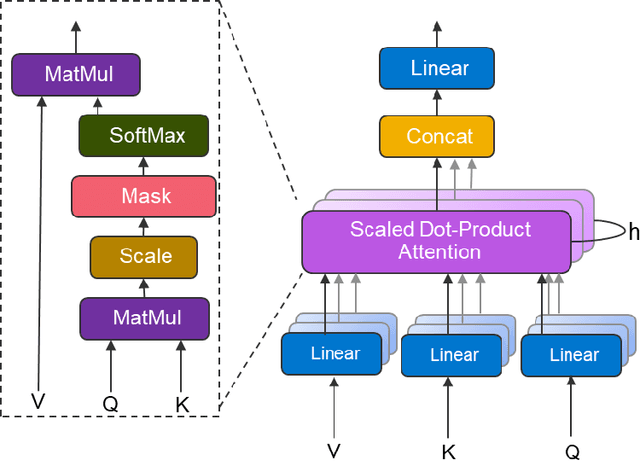Alexander Sergeev
Densifying Assumed-sparse Tensors: Improving Memory Efficiency and MPI Collective Performance during Tensor Accumulation for Parallelized Training of Neural Machine Translation Models
May 10, 2019



Abstract:Neural machine translation - using neural networks to translate human language - is an area of active research exploring new neuron types and network topologies with the goal of dramatically improving machine translation performance. Current state-of-the-art approaches, such as the multi-head attention-based transformer, require very large translation corpuses and many epochs to produce models of reasonable quality. Recent attempts to parallelize the official TensorFlow "Transformer" model across multiple nodes have hit roadblocks due to excessive memory use and resulting out of memory errors when performing MPI collectives. This paper describes modifications made to the Horovod MPI-based distributed training framework to reduce memory usage for transformer models by converting assumed-sparse tensors to dense tensors, and subsequently replacing sparse gradient gather with dense gradient reduction. The result is a dramatic increase in scale-out capability, with CPU-only scaling tests achieving 91% weak scaling efficiency up to 1200 MPI processes (300 nodes), and up to 65% strong scaling efficiency up to 400 MPI processes (200 nodes) using the Stampede2 supercomputer.
Horovod: fast and easy distributed deep learning in TensorFlow
Feb 21, 2018



Abstract:Training modern deep learning models requires large amounts of computation, often provided by GPUs. Scaling computation from one GPU to many can enable much faster training and research progress but entails two complications. First, the training library must support inter-GPU communication. Depending on the particular methods employed, this communication may entail anywhere from negligible to significant overhead. Second, the user must modify his or her training code to take advantage of inter-GPU communication. Depending on the training library's API, the modification required may be either significant or minimal. Existing methods for enabling multi-GPU training under the TensorFlow library entail non-negligible communication overhead and require users to heavily modify their model-building code, leading many researchers to avoid the whole mess and stick with slower single-GPU training. In this paper we introduce Horovod, an open source library that improves on both obstructions to scaling: it employs efficient inter-GPU communication via ring reduction and requires only a few lines of modification to user code, enabling faster, easier distributed training in TensorFlow. Horovod is available under the Apache 2.0 license at https://github.com/uber/horovod
 Add to Chrome
Add to Chrome Add to Firefox
Add to Firefox Add to Edge
Add to Edge